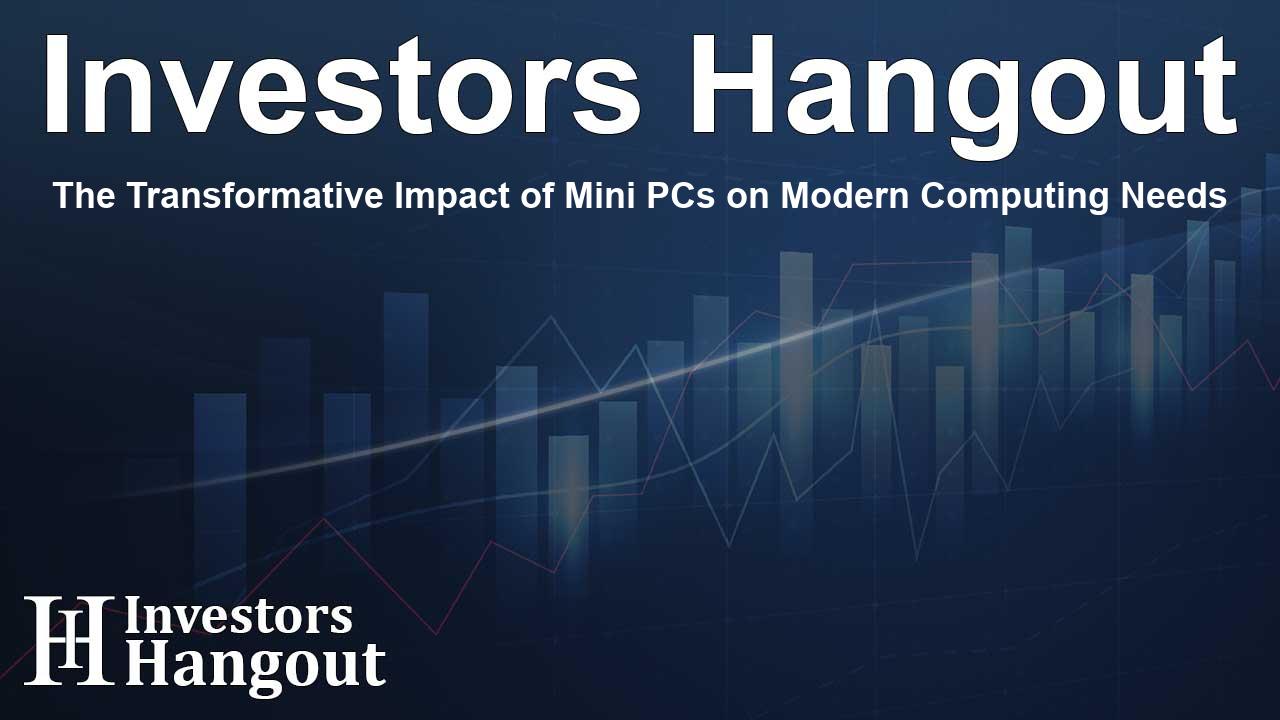The Transformative Impact of Mini PCs on Modern Computing Needs

Understanding the Mini PCs Market Growth
In recent years, the mini-PCs market has seen a remarkable surge, with a valuation of USD 22.38 billion in 2023 and projections indicating it will exceed USD 34.25 billion by 2032. This growth translates to an impressive compound annual growth rate (CAGR) of 4.9% from 2024 to 2032. Mini-PCs are increasingly becoming go-to solutions for consumers and businesses alike, thanks to their blend of powerful performance in a space-saving design.
Why Mini PCs Are Gaining Popularity
One of the primary factors driving the growth of mini-PCs lies in their efficiency. These compact devices pack significant computational power, making them perfect for industries like education, healthcare, corporate, and retail. Their design allows them to fit in tight spaces while providing robust performance, addressing the need for high computing resources without the bulk of traditional desktop systems.
The Rise of Compact Technology
As more businesses seek energy-efficient and high-performance computing options, mini-PCs rise to the occasion. They offer a unique solution for environments where space is limited, such as modern office cubicles and home setups. This trend is particularly evident in the U.S., where the mini-PC market reached USD 6.38 billion in 2023, with forecasts estimating it will climb to USD 8.54 billion by 2032.
Mini PCs Across Different Applications
Applications for mini-PCs continue to diversify, reflecting their growing relevance in various sectors. In 2023, the Home Entertainment segment accounted for a staggering 42% of the revenue generated by mini-PCs. Users appreciate their ability to stream content seamlessly, game effectively, and handle multimedia tasks. The increasing demand for compact, high-performance devices has made mini-PCs a fixture in entertainment systems across households.
Industry Vertical Contributions
Consumer electronics emerged as a significant contributor, representing 35% of the total revenue in the sector in 2023. Companies like Lenovo and ASUS are at the forefront, offering a range of mini-PCs designed for gaming and personal computing. This consumer preference for compact devices speaks volumes about the shift toward high-performance technology without compromising on space.
Performance and Technological Innovations
Mini-PCs are also advancing technologically. The processor segment stands out with projected growth at a CAGR of 6.67%, fueled by the need for processing power capable of supporting intensive applications. Manufacturers like Intel and AMD are equipping these devices with powerful processors, including Intel's Core i5/i7 and the AMD Ryzen series. Such advancements allow mini-PCs to compete directly with traditional desktop computers, effectively bringing desktop-level performance into a smaller footprint.
Regional Market Insights
Regionally, North America leads the mini-PCs market, commanding about 40% of the global share. This dominance stems from the high adoption rate of mini-PCs across sectors such as education and healthcare, bolstered by a robust IT infrastructure. In contrast, the Asia Pacific region is expected to witness the fastest growth, propelled by rapid digitization and higher disposable incomes, which make mini-PCs a viable choice for more consumers and businesses alike.
Recent Developments in Mini-PC Technology
One exciting development recently comes from Acer's Veriton Vero Mini, celebrated for its slim profile while still packing in valuable features. As the mini-PC market continues to evolve, these innovative products demonstrate the balance between advanced performance and practical design.
Conclusion: Future of Mini PCs
The mini-PC market appears poised for further expansion as demand for compact and efficient computing solutions continues to rise. These devices have not only redefined how we approach computing but also highlighted the trend toward optimizing space without sacrificing performance. As advancements in technology continue, mini-PCs may soon become a staple in homes and businesses worldwide.
Frequently Asked Questions
What factors contribute to the growth of the mini-PC market?
The growth is driven by demand for compact and efficient computing solutions across various industries, particularly for space-saving tech.
What are the main applications of mini-PCs?
Mini-PCs are widely used in home entertainment, corporate environments, healthcare, and education, largely due to their high performance and small size.
Which companies are leading in the mini-PC market?
Key players include Acer, Hasee Computer, Elitegroup, Apple, Lenovo, ASRock, ASUSTeK, Intel, HP, and Dell Technologies.
How has technology impacted mini-PC performance?
Advancements in processor technology have significantly enhanced performance, allowing mini-PCs to handle intensive applications typically reserved for larger desktops.
Which regions are seeing the fastest growth in mini-PCs?
The Asia Pacific region is positioned for the fastest growth, driven by rapid digitization and increased consumer affordability.
About The Author
Contact Evelyn Baker privately here. Or send an email with ATTN: Evelyn Baker as the subject to contact@investorshangout.com.
About Investors Hangout
Investors Hangout is a leading online stock forum for financial discussion and learning, offering a wide range of free tools and resources. It draws in traders of all levels, who exchange market knowledge, investigate trading tactics, and keep an eye on industry developments in real time. Featuring financial articles, stock message boards, quotes, charts, company profiles, and live news updates. Through cooperative learning and a wealth of informational resources, it helps users from novices creating their first portfolios to experts honing their techniques. Join Investors Hangout today: https://investorshangout.com/
The content of this article is based on factual, publicly available information and does not represent legal, financial, or investment advice. Investors Hangout does not offer financial advice, and the author is not a licensed financial advisor. Consult a qualified advisor before making any financial or investment decisions based on this article. This article should not be considered advice to purchase, sell, or hold any securities or other investments. If any of the material provided here is inaccurate, please contact us for corrections.
